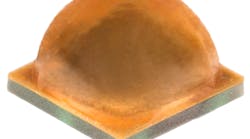This article was published in the November/December 2011 issue of LEDs Magazine.
View the Table of Contents and download the PDF file of the complete November/December 2011 issue.
+++++
On a recent trip to Taiwan, it became clear that the overall feeling among LED industry players is pretty gloomy. I came across a variety of issues relating to LED pricing, personnel, and subsidies. However, one company, Lextar, managed to go public in September (www.ledsmagazine.com/news/8/9/35), so the news is not all bad.
Concerning pricing, the industry was shocked by rumors of a quote of $0.08 given by a large Korean vendor for a 5630-type packaged LED for lighting. Such packages are often used in retrofit lamps that do not require high lumen output. The price is equivalent to approximately 400 lm/$. Even in Taiwan, where the art of cost-cutting is most refined, this price is looked upon as below cost. A curious observer would note that a similar package from the same vendor designated for backlight applications is more expensive. The conclusion varies, but most people feel this may be an attempt to buy the lighting market, or that it is another tactic to put downward pressure on prices for the whole industry and to force weaker players out. Whatever it is, once the prices go down, they don’t usually go back up.
Retaining personnel is a challenge for Taiwanese companies: whole teams of engineers have moved from Taiwan to China, and with a 4-5-fold increase in salary, the temptation can be irresistible. Teams frequently move together, but this is essentially a one-way street since no Taiwanese companies will ever hire them again. When there were many start-ups in China buying MOCVD systems last year, bidding wars were frequent for these teams. What’s interesting is that quite a few of these relocated personnel have totally changed their identity. The suspicion is that these people took valuable IP with them. Due to the political situation between the two regions, there is no legal way to pursue or extradite suspected criminals from China to Taiwan. In a Confucian society, where ancestry worship is core to the cultural identity, changing one’s name means denying one’s ancestors. I only hope the money is worth it.
I met someone from Taiwan whose company sold energy-saving electronic ballasts for florescent lights. He secured a contract to supply 2700 ballasts to a major US retail chain-store. The product performed as specified, saving 25-30% energy, and payback was 1.5 years based on 24/7 usage. My friend called every 6 months to check on the products and see if follow-on orders were going to come. After a couple of years, he gave up calling. Four years after the initial installation, he received an order for 775,000 units. Similarly, after Walmart tested LED lights from GE in their refrigerator displays, it took them 3 years to decide to roll out LEDs in all stores. This illustrates the chasm between the early adopters and the early majority. Time has passed since these stories happened, and the chasm is probably shorter now. However, if you are a start-up in the LED lighting market, what is your strategy for crossing the chasm?
A new kind of net profit
The mainstream semiconductor industry is used to feast and famine. During down-cycles, weaker players leave the scene, while stronger ones survive to reap the profit in the next upturn. In this particular down-cycle, we have noticed something interesting when comparing the net profits of two LED chip companies; Epistar from Taiwan and SanAn from China.
Epistar’s net profit for the first half of 2011 was NT 1.1 billion ($35.7 million), with a margin of 11%. In the same period in 2010, the margin was 29% on NT 2.7 billion ($88.6 million) net profit. In contrast, SanAn’s net profit margin for the first half of 2011 was RMB 459 million ($72.3 million) with 64% margin. In the same period in 2010, the margin was 56% on RMB 202 million ($31.8 million) net profit. Why the huge difference in profit margin between the two companies? Why did SanAn’s margin and net profit go up in 2011 when the overall market crashed?
Upon further analysis, SanAn received RMB 583 million ($91.8 million) in subsidies for the first 6 months of 2011 from the government, and that is counted towards its net profit. If you take out the subsidies, it lost RMB 124 million ($19.5 million). For the rest of 2011, SanAn still has RMB 928 million ($146.2 million) in subsidies to add to its balance sheet.
Another new player in the China LED world is ETI (Elec-Tech International), which received subsidies totaling RMB 534 million ($84.1 million) in 2011. This is an amount higher than the net profit of the company’s LED business.
I think we will have to invent a new term for this type of “net profit,” to distinguish it from the hard earned “net profit” we are used to.




